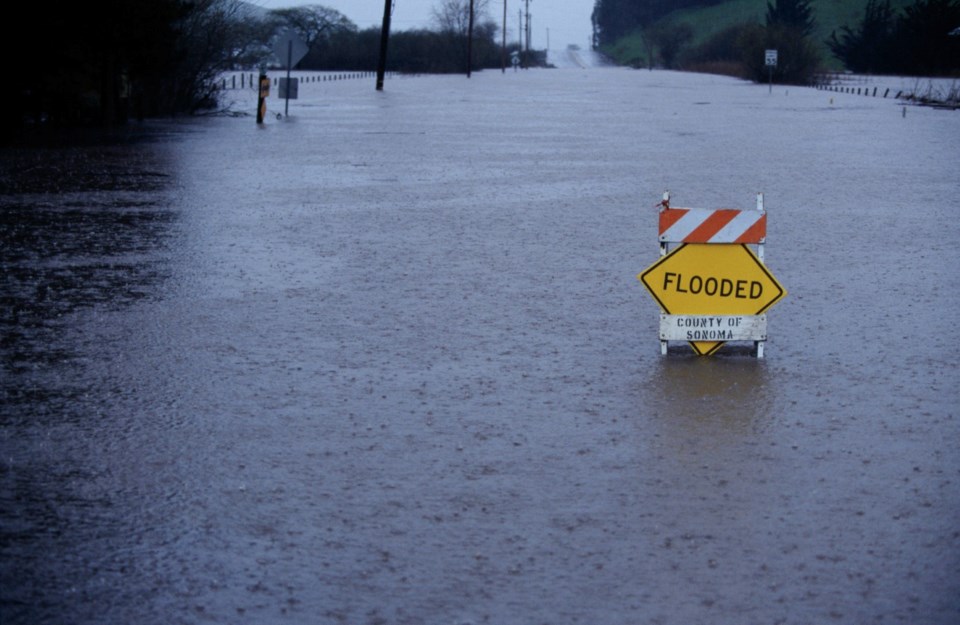In the final book of his Annals of the Former World anthology, writer John McPhee tackles the geology and geography of the still-young, barely holding-together Golden State. His title, like his writing, is brilliant: Assembling California.
Assembling because most of California’s land, water and history are as violent and ever-changing as its San Andreas fault. McPhee writes, “so radical and contemporary (are) the regional tectonics that the highest and the lowest points in the contiguous United States (are) within 80 miles (130 kilometres) of each other in California.”
That wild dichotomy was on full display again this winter as much of California’s worst drought in centuries drowned under “atmospheric rivers” of pounding rain. January through March, for example, Los Angeles measured 386 millimetres of rain, twice its usual amount and, incredibly, two times more than fell on Seattle over the same three months.
The storms have also brought devastation. On March 17, the San Francisco Chronicle estimated overall storm damage to the state’s highways at almost $700 million. That price guess is sure to climb.
The rain brought a different challenge to California’s Central Valley, a mostly flat, 50,000 sq. kilometre agricultural Garden of Eden, where water — and in the last decade, the lack of it — is critical.
Unforeseen, however, is that 2023’s rains are fast filling the long-dry Tulare Lake in the valley’s Kings County. Now, after the winter storms, reported the April 2 New York Times, the intensively farmed lakebed has become “a 790 sq. mile (2,050 sq. km) bathtub” equal to “the size of four Lake Tahoes.”
And that’s before an expected massive snowmelt — triple the historical average, another consequence of the freakish winter weather — from the nearby Sierra Nevada mountains adds to the still-expanding lake.
The return of so much water — precious lifeblood in the dry but bountiful Central Valley — is the perfect, if unwelcome, metaphor for where many U.S. farmers and ranchers now find themselves. The now underwater “landscape is among the most heavily engineered in the nation,” and yet, one official rightly notes, “we have no control over nature.”
We never did, but don’t tell that to the Times, which thinks we’re still in charge: “For now, nature seems determined to win in an era of climate change.”
Nature is winning because, as farmer and philosopher Fred Kirschenmann has preached for decades, “Mother Nature always bats last.”
And that’s just in the far West. Other parts of the United States face their own climate woes.
As California soaks under too much of everything, “the abundant snow in the Rocky Mountains this year … is not enough to overcome two decades of drought that has pushed major reservoirs along the Colorado River to dangerous levels,” Camille Calimlim Touton, commissioner of the U.S. Bureau of Reclamation, told the Washington Post April 3.
That means local officials representing 40 million water users in seven western states must develop a plan for “unilateral cuts to water usage” this year or face an unprecedented federal plan — announced April 11 — on “how those (cuts) could be distributed if the states” can’t agree.
Whatever route is followed, trouble is certain to be a byproduct for several reasons, many tied to California’s historical grip on Colorado River water.
“Under laws and court rulings dating back decades, in times of shortage,” explains the Post, “Arizona would lose its right to its water before California.”
Of course, Uncle Sam’s chequebook will accompany any federally supported allotment plan. Last year’s Inflation Reduction Act “includes $4 billion for the western drought that includes payments to farmers who are willing to conserve Colorado River water.”
That concept, almost as old as the river itself, will push “fallowing or making irrigation more efficient” because, Touton explained, “‘we want agriculture to continue in the (Colorado) basin as well as … support … all the other uses, including for cities, ecosystems and Native American tribes.”
Of course “we” want everyone “supported,” but “we” — no matter the size of our chequebook — can’t buy our way out of climate change.
But here we stand, still swinging at every pitch and believing we are winning.
Alan Guebert is an agricultural commentator from Illinois.




